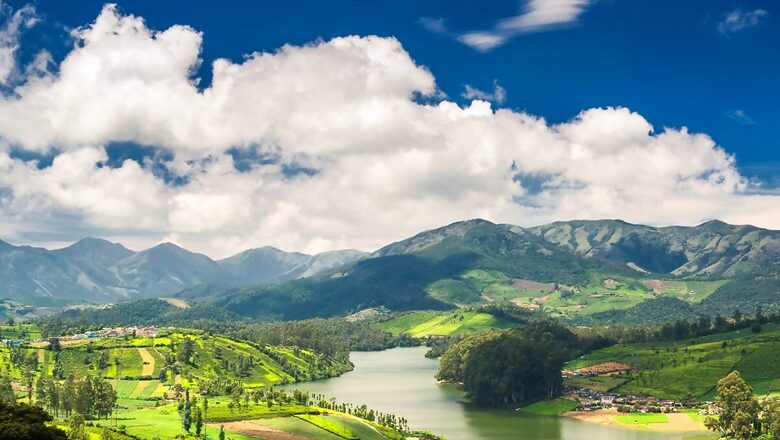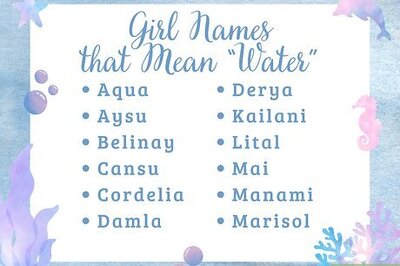
views
“Our aim is to get the draft notification finalised as soon as possible,” said Dr Sanjay Kumar, former Director-General of Forests, who heads the five-member expert committee to re-examine the suggestions of the six southern states on declaring Western Ghat region as an ‘Ecologically Sensitive Area’.
“We have a 60-day period for seeking suggestions, following which we will submit our recommendations to the environment ministry to take the final call. What happened in Kerala was very unfortunate, and we should try to finalise the notification as soon as possible. The process has been stuck for over 12 years,” Kumar told News18 in an exclusive conversation.
In the aftermath of a catastrophic landslide in Kerala’s Wayanad that killed nearly 300, the Centre on Friday issued a fresh draft to notify nearly 56,825 sq km of the Western Ghats under ESA requiring protection and conservation. The long-pending notification has already undergone multiple revisions in the past, with the last draft issued in July 2022. A five-member committee was constituted to address the issues raised by the states and any discrepancies on the names and area of villages under ESA.
The panel has been tasked to create a framework keeping in view the conservation aspects of the disaster-prone region, as well as its rights, privileges, needs and developmental aspirations. It has already held multiple meetings with the state governments to iron out the final details. “It is important that the information given by the state governments should have a strong scientific basis. There are a lot of misconceptions regarding the draft notifications which need to be addressed,” added Kumar.
FINAL NOTIFICATION LIKELY AFTER SEPTEMBER
The National Green Tribunal (NGT) in its order dated July 29 stated that a timeline be fixed for finalising the long-pending notification.
The demarcation of any area under ESA has to be first be proposed by the respective state governments, after which the Centre can notify it ‘with immediate effect’ under Section 3 of the Environment (Protection) Act, 1986, (EPA) — along with Rule 5 of the Environment (Protection) Rules, 1986, following a 60-day notice for public consultation. However, experts say, when “deemed expedient in the public interest”, the Centre has the power to make such decisions without public consultation under the EP Rules.
“This power has been routinely used by MOEFCC to dilute environmental norms without public consultations. So why not notify the Western Ghats as an ESA without further delay? Over a decade ago, committees appointed by the ministry advised on this matter, but due to political disagreements, the final notification has never been issued despite multiple draft notifications. The impact of such delays is now evident,” said Debadityo Sinha, lead-climate and ecosystems, Vidhi Centre for Legal Policy.
FIRST DRAFT IN MARCH 2014; ISSUE STUCK IN CONSULTATION
The process has been stuck in consultation since August 2011 when the Western Ghats Ecology Expert Panel (WGEEP) headed by Prof Madhav Gadgil first submitted its report recommending that the whole Ghat region covering about 1,29,000 sq. km be declared as ‘Ecologically Sensitive Area’. A High-Level Working Group (HLWG) headed by Dr K Kasturirangan in April 2013 later identified around 37 per cent of the Western Ghats (59,940 sqkm) as ecologically-sensitive.
The first draft notification was issued on March 10, 2014, declaring biologically and culturally diverse areas as ESA, followed by multiple drafts in September 2015, February 2017 and October, 2018. It was re-notified for the fifth time on July 6, 2022. Since the Gadgil report has geo-mapped the region, the state governments were required to do the physical verification of the land.
The latest draft notification has proposed nearly 56,825.7 sq km area (forest and non-forest) across states — Kerala (9993 sqkm), Karnataka (20,668 sq km), Tamil Nadu (6914 sqkm), Maharashtra (17,340 sqkm), Goa (1,461 sqkm), and Gujarat (449 sqkm). However, the actual area will be finalised based on the recommendation of the states, views of stakeholders and ESA Expert Committee. The draft makes it clear that the provisions will not affect the ownership of the property, and the responsibility for monitoring and enforcing the provisions will remain with the state governments.
WHAT HAPPENS AFTER FINAL NOTIFICATION?
Once the region is brought under Ecologically-Sensitive Area (ESA), there will be a complete ban on mining, quarrying and sand mining and all existing mines shall be phased out within five years from the date of issue of the final notification or on the expiry of the existing mining lease, and whichever is earlier. No new thermal power projects and expansion of existing plants will be allowed.
All new ‘red’ category of industries as specified by the Central Pollution Control Board or State Pollution Control Board and the expansion of such existing industries will also be banned and the list of ‘red’ category of industries will be as specified by the CPCB. All existing ‘red’ category of industries, including health care establishments, will continue in the ESA under the applicable rules and regulations.
Stretched over a distance of over 1,500 kms from Gujarat to Kanyakumari, Tamil Nadu, the Western Ghats is a global biodiversity hotspot and the origin of Godavari, Krishna, Cauvery and a number of other rivers. It traverses through six states — namely Gujarat, Maharashtra, Goa, Karnataka, Kerala and Tamil Nadu — and is also included in the UNESCO World Natural Heritage List.



















Comments
0 comment